Basic grammar rules (September notes)
1/21
There's no tags or description
Looks like no tags are added yet.
Name | Mastery | Learn | Test | Matching | Spaced |
|---|
No study sessions yet.
22 Terms
An Aidiacht Shealbhach
This is the ‘possessive adjective’, which is words such as ‘my’ ‘your’ ‘his’ etc. In Irish they are as follows:
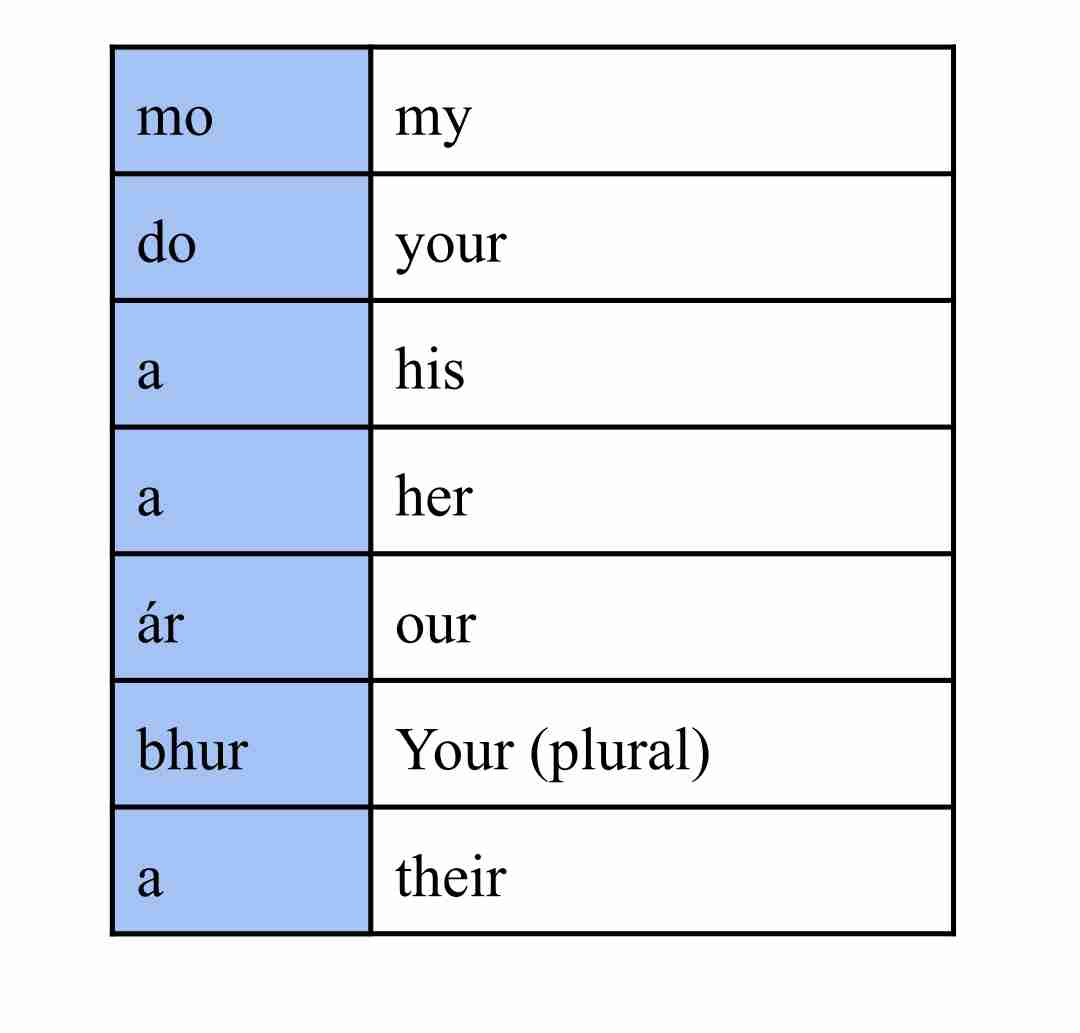
Cosanant
After each possessive adjective, there is usually a change to the word after. The change that takes place depends on whether the word starts with a consonant or vowel
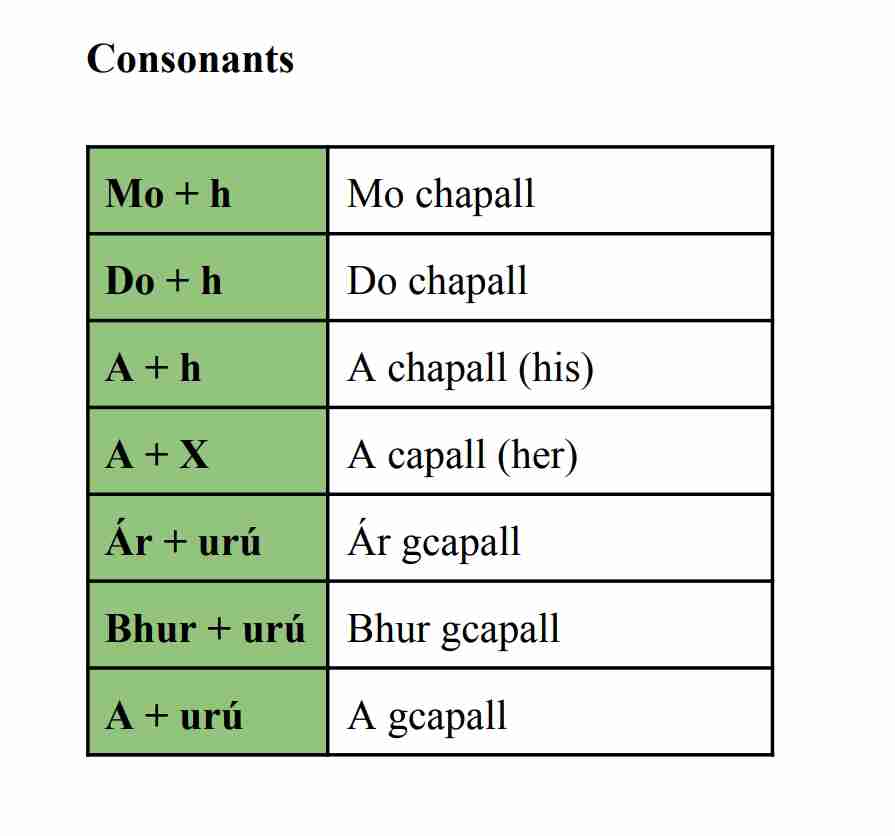
Vowels
After each possessive adjective, there is usually a change to the word after. The change that takes place depends on whether the word starts with a consonant or vowel
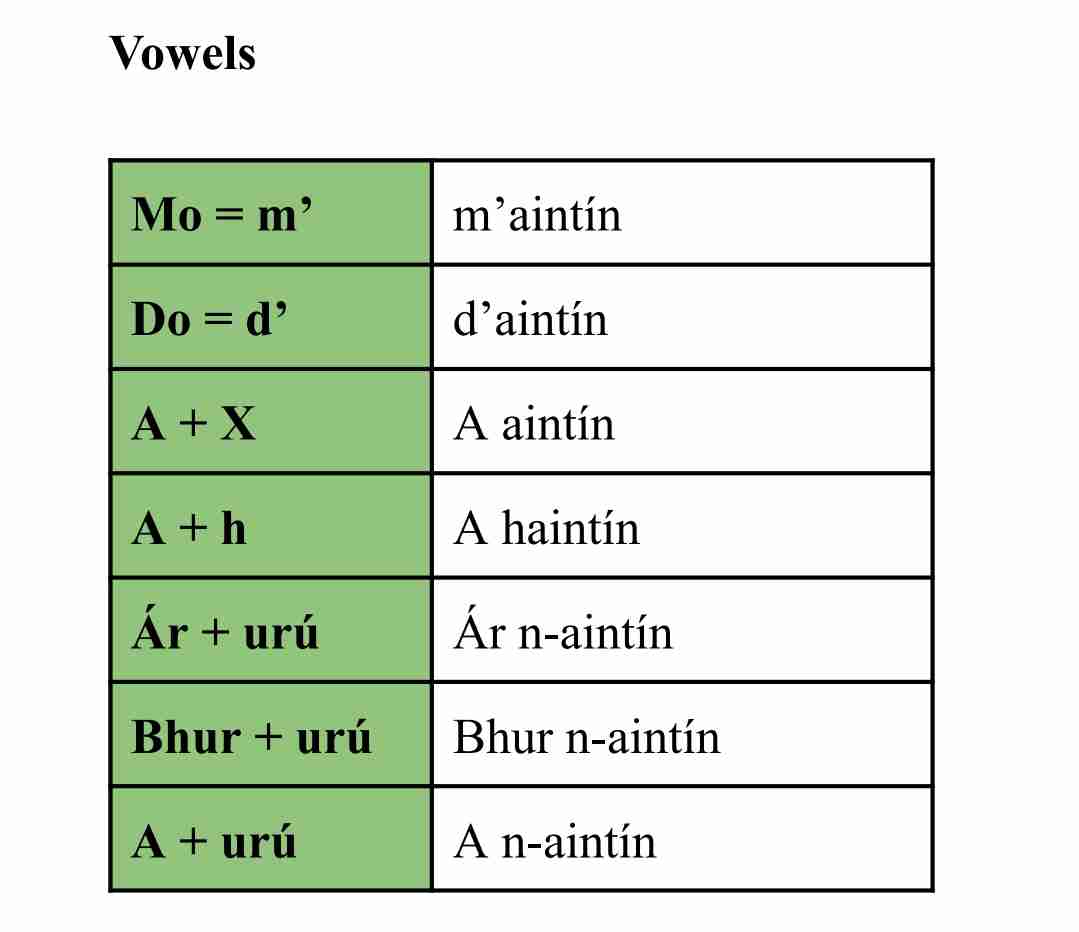
Séimhiú sa Ghaeilge
When do I add a ‘h’ to a word in Irish?
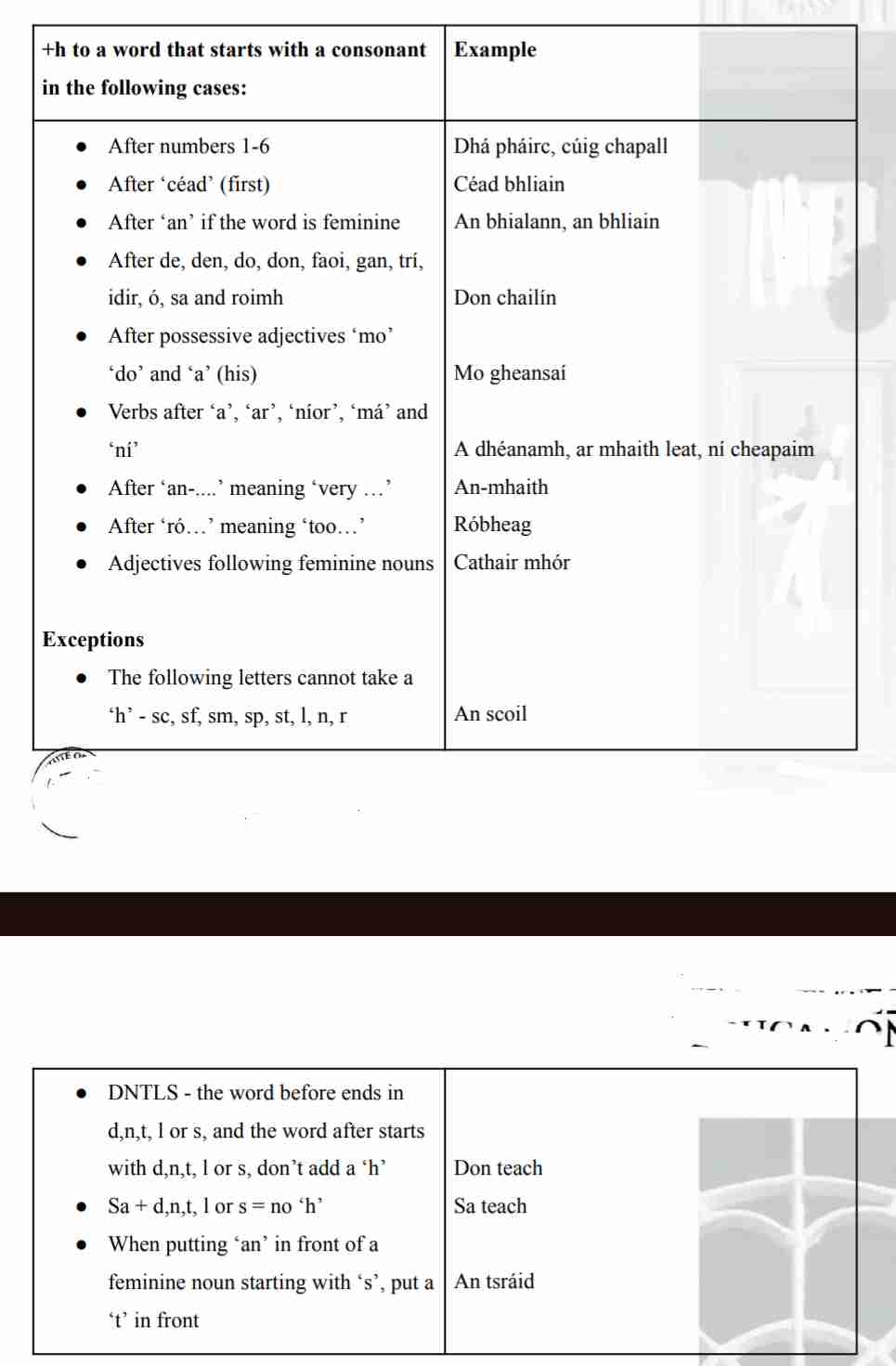
Urú sa Ghaeilge
When to add an urú for basic grammar.
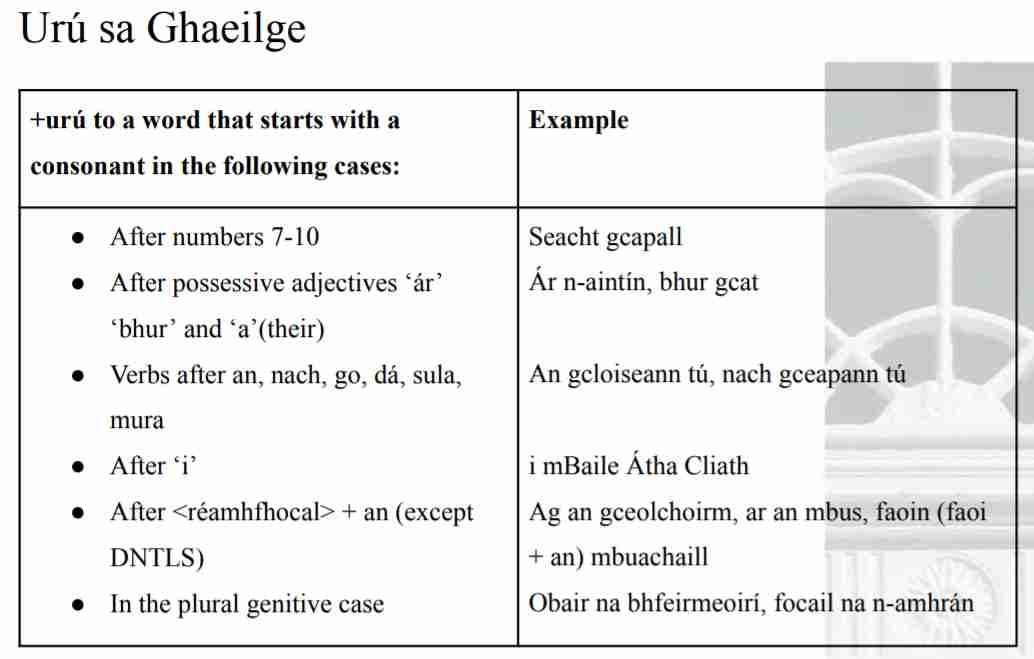
What about ‘i’ in Irish?
Note: I - ‘a’ (consonant)
‘I’ is always followed by an urú if possible
i mBaile Átha Cliath
Words following these prepositions take nothing:
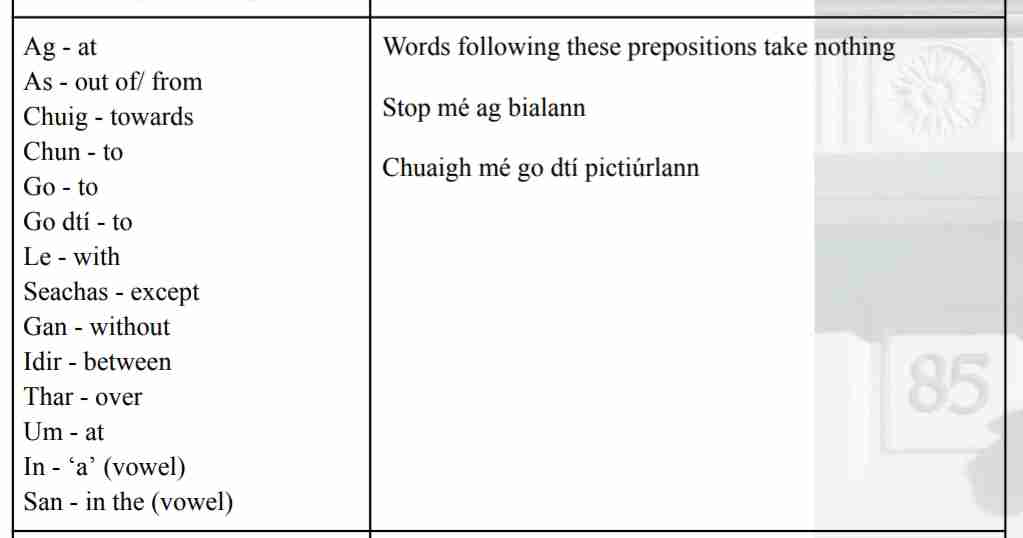
If the word coming after any of these prepositions starts with a consonant, add ‘h’:
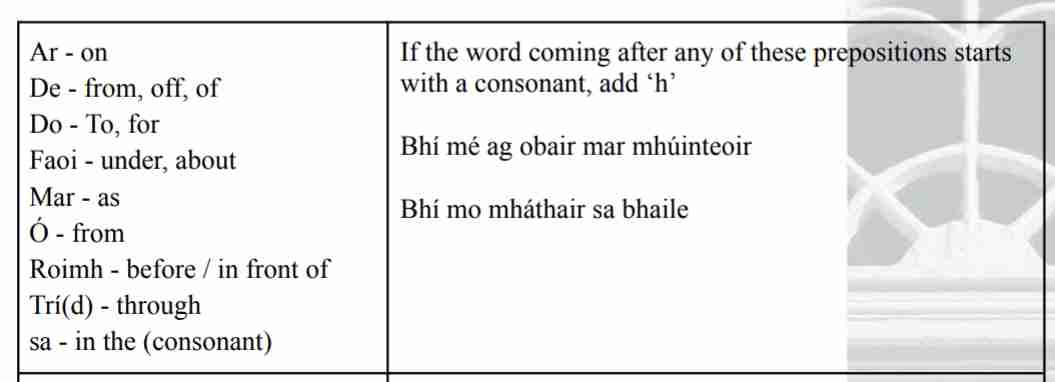
An Réamhfhocal + ‘an’ (the)
When combining a preposition with ‘an’, for example:
Leis an - with the
Ar an - on the
The word coming after the <preposition + an> must get an urú in front of it.
However, there is an exception to this rule known as ‘DNTLS’.
This means that if the word coming after the preposition and ‘an’ e.g ar an, starts with any of the letters in ‘DNTLS’, you ignore the rule and don’t add an urú. For example:
‘Leis an gcailín’ BUT ‘leis an dochtúir’
The main, Na Réamhfhocail (prepositions)
Ar
Ag
Do
Le
Ar (on) - Conjugated
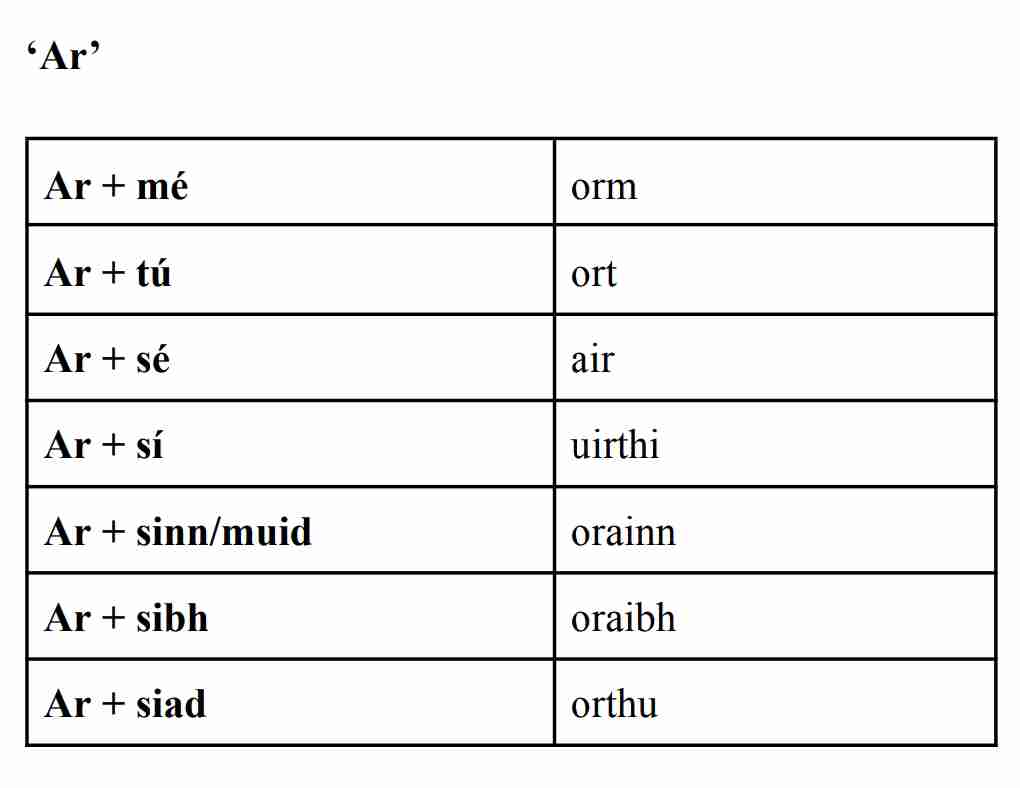
‘Ar’ rules
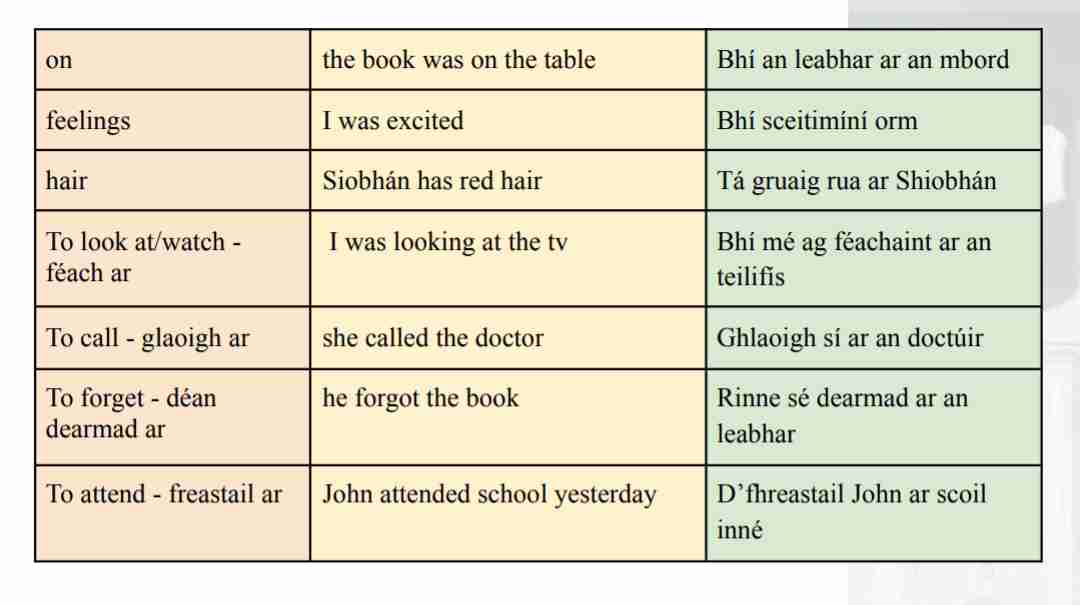
Exceptions - emotions that don’t need ‘ar’
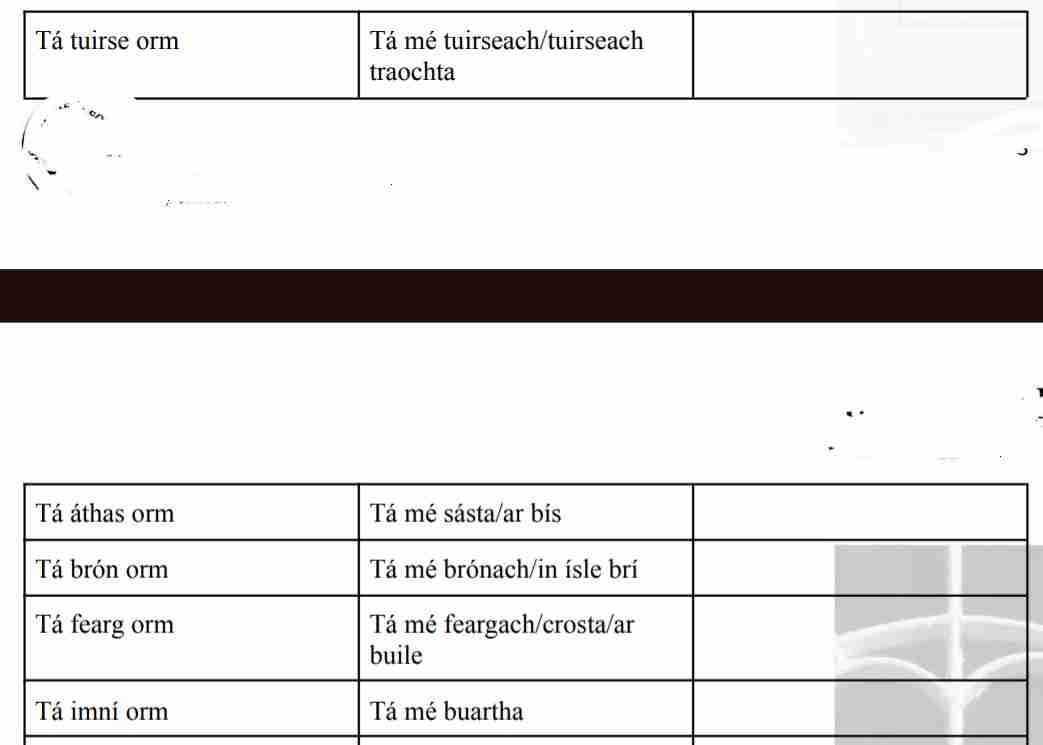
‘Ag’ (at) - Conjugated
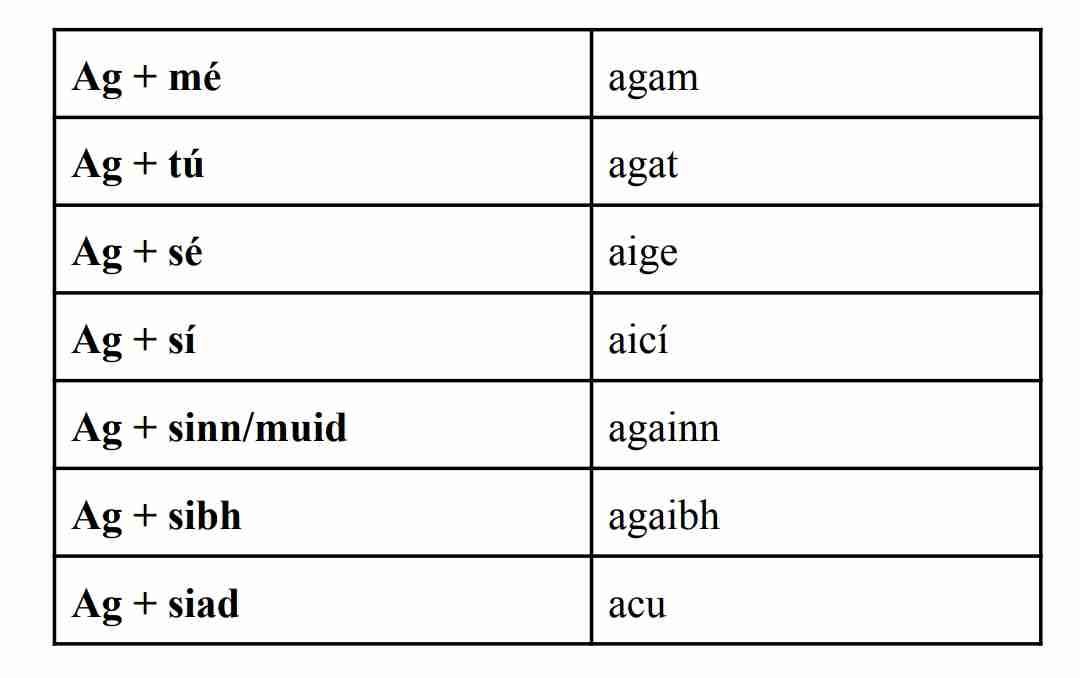
‘Ag’ Rules
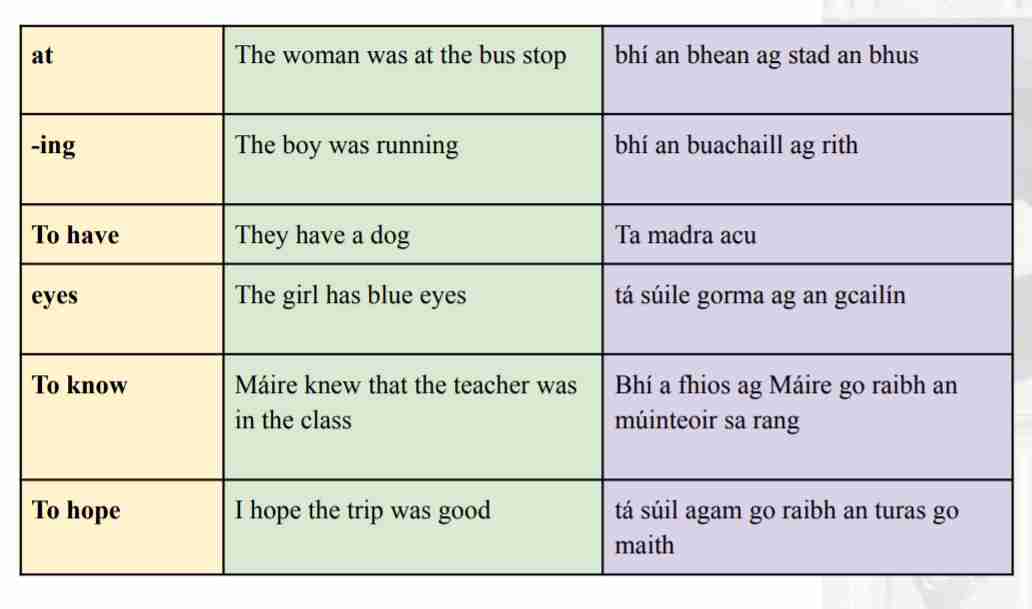
Do (for)- Conjugated
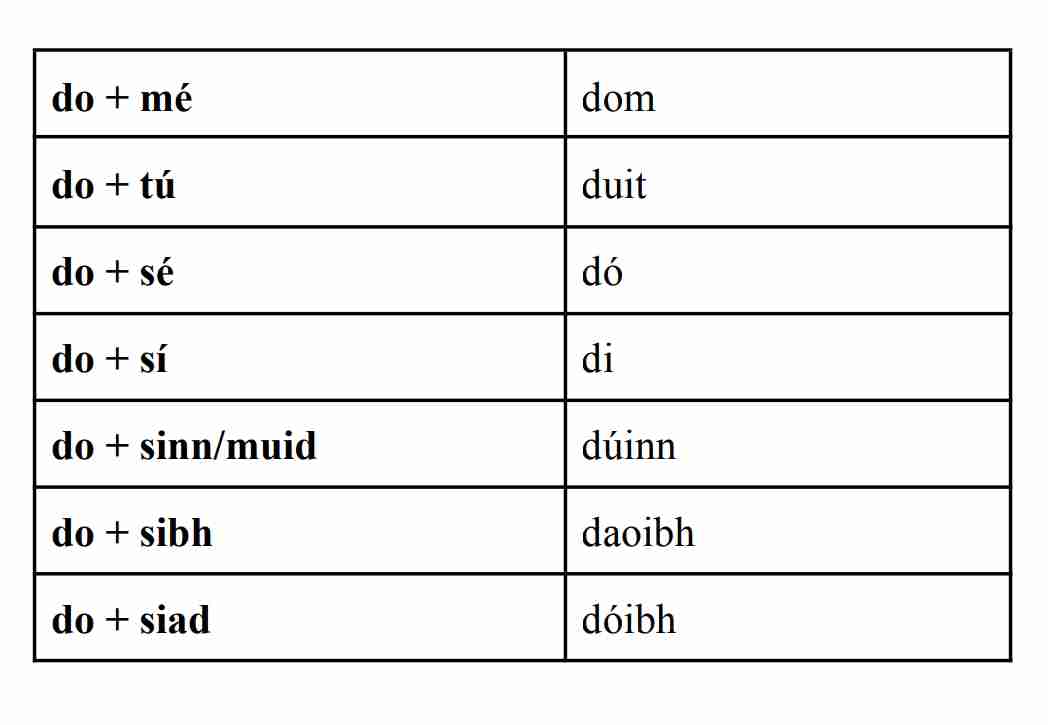
‘Do’ Rules
To annoy - cuir as do
My brother annoys me.
Cuireann mo dheartháir as dom.
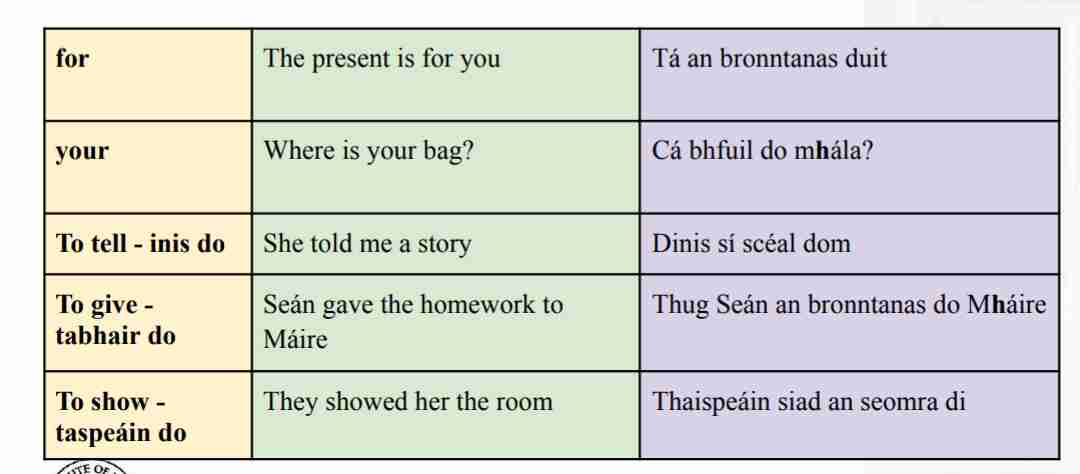
Le (with)- Conjugated
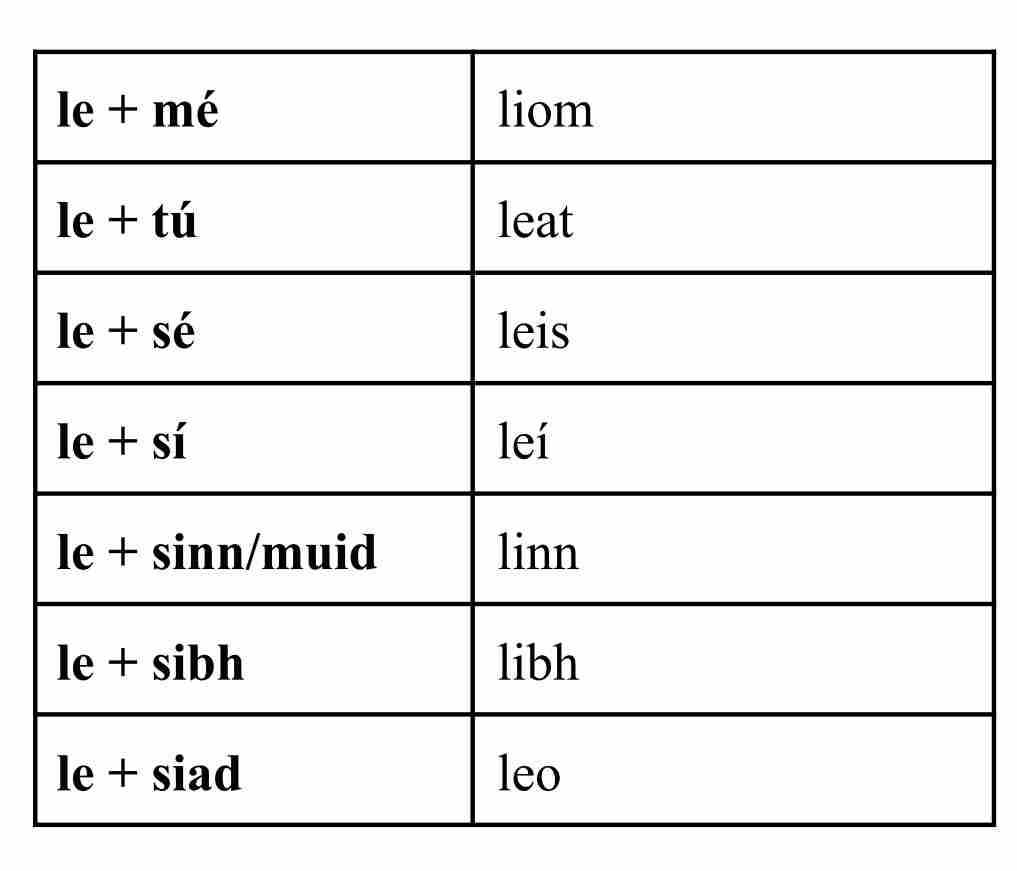
‘Le’ Rules
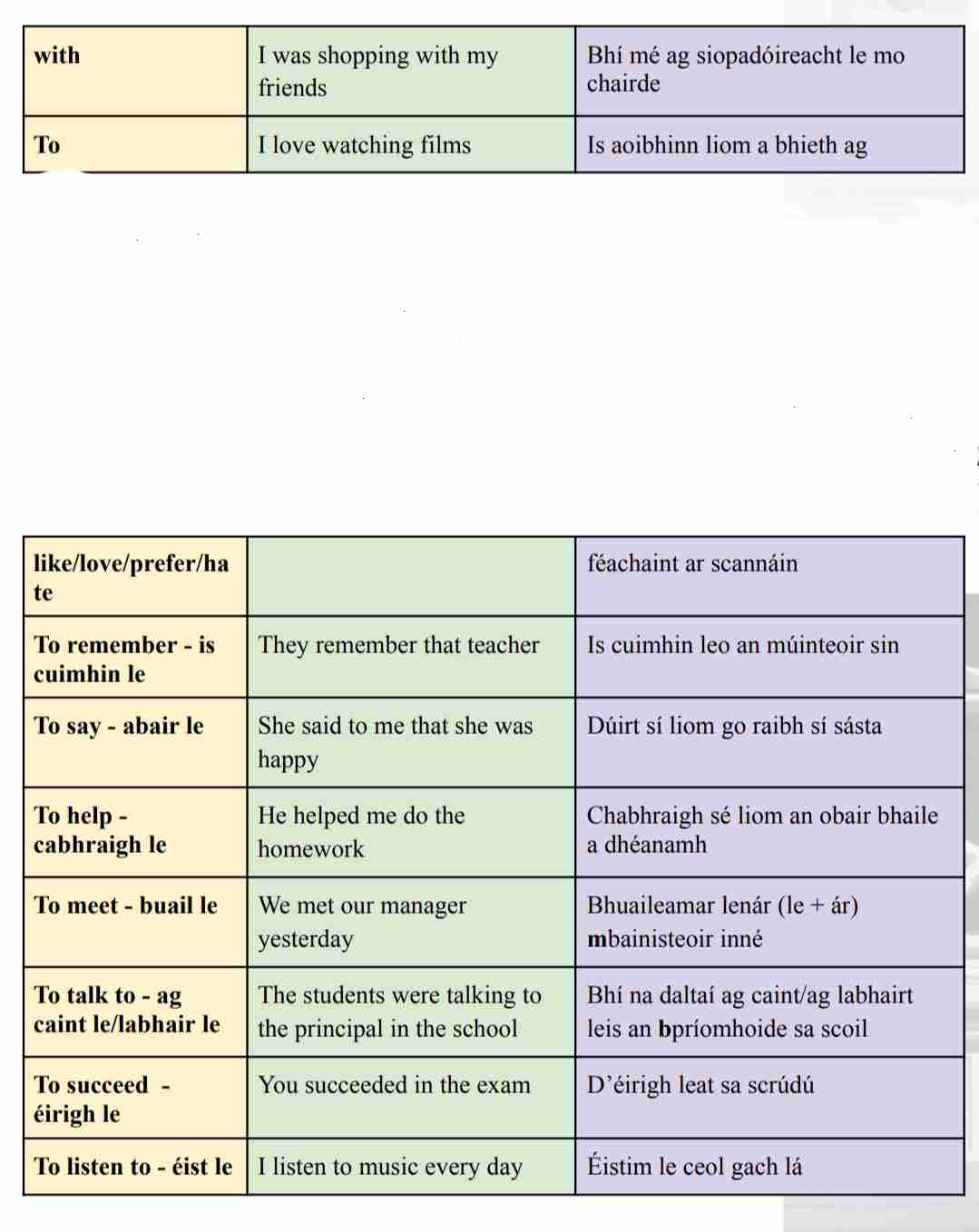
What happens when there is an leis + an?
YES, as we discussed (or flashcardised) in the earlier stages, leis and an an get an juicy urú.
Leis + an = urú
Na briathra sa Ghaeilge
There are two categories of verbs in Irish:
Céad Réimniú or Dara réimniú
Leathan (a,o,u) or caol (i,e)